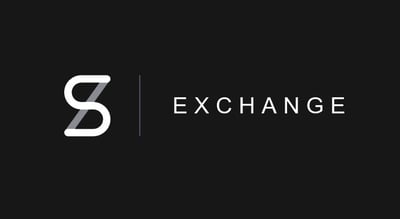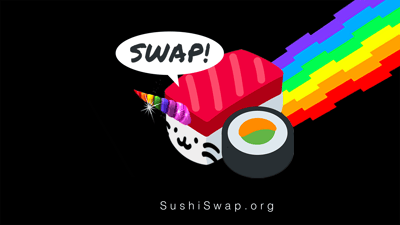A Comprehensive Guide to Layer 2 Solutions: Scaling Ethereum and Beyond February, 2025
 Written by Nikolas Sargeant
Written by Nikolas Sargeant
| Comisiones de intercambio | Métodos de depósito | |||||||||
|---|---|---|---|---|---|---|---|---|---|---|
| Nombre | Criptomonedas compatibles | Comisión del tomador | Comisión del creador | Comisiones de extracción | Transferencia electrónica | Tarjeta de crédito | Permitidas en Estados Unidos | Activo desde | Offer | |

Curve Finance Exchange
Decentralized Exchanges
|
8 | 0.04% | 0.04% | 0.000079 | 2020 |
|
||||

QuickSwap Exchange
Decentralized Exchanges
|
51 | 0.30% | 0.30% | 0.000043 WBTC | 2020 |
|
||||

Synthetix Exchange
Decentralized Exchanges
|
0.30% | 0.30% | 2018 |
|
||||||

Uniswap
Decentralized Exchanges
|
390 | 0.30% | 0.30% | 0.000079 | 2018 |
|
||||

SushiSwap Exchange
Decentralized Exchanges
|
79 | 0.30% | 0.30% | 0.00041 | 2020 |
|
||||
Blockchain technology has reshaped the digital landscape, offering decentralized finance, NFTs, and other Web3 innovations. However, one major challenge stands in the way of its full potential: scalability. Ethereum, the most widely adopted blockchain for decentralized applications, has often faced congestion and high gas fees, limiting its usability for mainstream adoption. Understanding Layer 2 solutions is crucial for developers, investors, and users as they represent a path to scalability, affordability, and faster transactions.
Layer 1 blockchains, like Ethereum, prioritize decentralization and security but often fall short on transaction throughput due to their consensus mechanisms. As Ethereum gained popularity, its limitations became glaringly obvious, creating demand for scalable solutions. This is where Layer 2 networks, including Arbitrum, Optimism, and zkSync, play a critical role. These solutions aim to extend blockchain functionality without compromising core security or decentralization principles.

By addressing network congestion and transaction costs, Layer 2 solutions enable developers to create applications with seamless user experiences. They also unlock potential for global blockchain adoption across sectors beyond finance—such as gaming, supply chain, and healthcare. This guide delves into Layer 2 technologies, their evolution, and how they integrate into Ethereum’s scaling roadmap. Whether you’re a crypto enthusiast or new to blockchain development, this comprehensive overview will provide essential insights into Layer 2 networks and their transformative impact on the blockchain ecosystem.
What Are Layer 2 Solutions?
Layer 2 solutions are protocols or frameworks that operate on top of an existing Layer 1 blockchain, like Ethereum, to improve scalability and transaction efficiency. They inherit the base security of Layer 1 but use external mechanisms to enhance performance without overloading the main chain.
Layer 1 vs. Layer 2: Key Differences
Layer 1 refers to the base blockchain, responsible for transaction validation and consensus. Ethereum’s Layer 1 uses Proof of Stake (PoS) to secure transactions. In contrast, Layer 2 networks offload transactional work while periodically communicating with Layer 1 to maintain data integrity and trust. Unlike Layer 1 upgrades, which require consensus changes and network-wide coordination, Layer 2 enhancements are less disruptive and faster to implement.

Why Layer 2 Solutions Matter
The scalability trilemma highlights the difficulty of balancing decentralization, scalability, and security. Layer 1 chains can only process a limited number of transactions per second, leading to high fees and long confirmation times during congestion. Layer 2s solve this by executing transactions off-chain, reducing on-chain congestion, and lowering costs.
They provide several benefits:
- Increased Speed: By reducing the burden on Layer 1, Layer 2 networks significantly enhance throughput.
- Lower Fees: Gas fees are reduced by aggregating and bundling transactions before posting them on-chain.
- Mass Adoption: By making transactions cheaper and faster, Layer 2 solutions facilitate widespread use of decentralized applications (dApps).
Layer 2 in Action: Key Use Cases
- DeFi Protocols: Uniswap on Arbitrum reduces transaction fees and enables fast token swaps, allowing traders to operate with lower costs during peak network congestion.
- NFT Platforms: Immutable X, a Layer 2 built using zk-rollups, provides gas-free NFT minting, making the technology accessible to artists and gamers.
- Payments: The Loopring protocol processes thousands of transactions per second, making it a popular Layer 2 solution for crypto payments and decentralized exchanges.
In summary, Layer 2 solutions are crucial for addressing Ethereum’s current limitations, helping it maintain its status as a leading blockchain platform while promoting growth and innovation across the crypto ecosystem.
The Evolution of Layer 2 Solutions
The need for Layer 2 solutions emerged as Ethereum and other blockchains gained popularity but struggled to meet increasing demand. Early blockchain designs prioritized security and decentralization, often at the expense of scalability. This created significant barriers, particularly when decentralized finance (DeFi) applications and NFT marketplaces experienced explosive growth.

Pre-Layer 2 Context
Initially, developers explored on-chain scaling methods, such as block size increases and consensus changes, but these solutions were limited. The demand for real-time scaling led to the development of Layer 2 solutions, which provided off-chain mechanisms for improving throughput.
Milestones in Layer 2 Development
- State Channels (2015): One of the earliest scaling solutions, state channels allowed transactions to occur off-chain between participants before finalizing on-chain. While useful, they had limited applicability to complex applications.
- Plasma (2017): Proposed by Vitalik Buterin and Joseph Poon, Plasma created hierarchical chains for offloading transactions. Although innovative, Plasma faced limitations in terms of security and usability.
- Rollups (2019-Present): Rollups emerged as the most promising Layer 2 solution, bundling large batches of transactions off-chain while ensuring security through periodic on-chain proofs.
Ethereum’s Role
Ethereum’s popularity and evolving ecosystem drove rapid development of Layer 2 technologies. The surge in DeFi activity in 2020, often referred to as “DeFi Summer,” accelerated the adoption of rollups and Layer 2 networks. Today, Ethereum’s roadmap heavily relies on these solutions to achieve long-term scalability.
Real-World Adoption and Growth
- Polygon: Originally designed as a sidechain, it evolved to become a major Layer 2 scaling solution with multiple tools, including zk-rollups and optimistic rollups.
- Optimism: Launched as an early optimistic rollup, Optimism has attracted projects like Synthetix and Aave due to its scalability and low fees.
- zkSync: The zkSync protocol is constantly evolving, with zkSync Era introducing advanced zk-proof-based solutions for greater security and scalability.

These milestones underscore how Layer 2 technologies have progressed from experimental concepts to critical components of the blockchain infrastructure.
Key Layer 2 Technologies
Rollups bundle multiple off-chain transactions into a single batch, which is then posted on-chain. They come in two primary forms: Optimistic Rollups and Zero-Knowledge (zk) Rollups.
Optimistic Rollups
Optimistic rollups assume transactions are valid by default and only execute fraud proofs if discrepancies are detected. Key players include Optimism and Arbitrum. Benefits include increased throughput and reduced costs, but exit delays can occur due to fraud verification processes.
For example, Arbitrum One powers popular dApps like Uniswap and SushiSwap, providing a scalable environment for DeFi projects while keeping costs manageable.
Zero-Knowledge Rollups
Zero-knowledge rollups use zk-proofs to verify batches of transactions before posting them on-chain, ensuring validity without requiring on-chain execution. Key players include zkSync and StarkNet. They offer faster finality and stronger security compared to optimistic rollups but can be complex to implement.
A good example is Immutable X, a zk-rollup-based NFT platform that facilitates gas-free trading and minting of NFTs, greatly improving user experience.

Comparison Table: Optimistic vs. zk Rollups
|
Feature |
Optimistic Rollups |
zk Rollups |
|
Verification Method |
Fraud proofs |
Zero-knowledge proofs |
|
Finality Time |
Delayed (fraud-proof) |
Immediate |
|
Security |
Moderate |
High |
|
Popular Solutions |
Optimism, Arbitrum |
zkSync, StarkNet |
Channels
State channels and payment channels enable participants to conduct multiple off-chain transactions without involving Layer 1 for every interaction. Only the initial and final states are recorded on-chain, making them ideal for microtransactions. The Lightning Network, used in Bitcoin, is a prominent example.
Similarly, Raiden Network for Ethereum enables fast, low-cost token transfers and has been applied in industries like gaming and microfinance.

Plasma
Plasma envisioned a network of child chains operating alongside Ethereum, offloading transactions while periodically reporting data to Layer 1. Although innovative, Plasma struggled with exit delays and complex dispute resolution processes, leading to its replacement by more efficient rollup solutions.
The OMG Network, an early Plasma-based solution, was later improved by shifting towards better Layer 2 mechanisms to enhance transaction speeds and user satisfaction.
Sidechains
Unlike true Layer 2 solutions, sidechains operate independently with their own consensus mechanisms. They are compatible with Ethereum but require bridges to transfer assets. Polygon (MATIC) is the most notable sidechain, offering a scalable environment for dApps while still maintaining connections to Ethereum’s ecosystem. Sidechains are useful for specific applications, but their separate security models distinguish them from Layer 2 networks.
A notable implementation is Axie Infinity’s Ronin sidechain, which enabled the popular play-to-earn game to process transactions cheaply and efficiently, contributing to its massive growth.
In-Depth Focus: Arbitrum, Optimism, and zkSync
Delve into the intricacies of Arbitrum, Optimism, and zkSync, exploring their roles in revolutionizing Ethereum scaling.
1. Arbitrum
Arbitrum launched in 2021 and quickly established itself as a leading Layer 2 network using optimistic rollups. Its core technology aggregates transactions off-chain and posts them on-chain using fraud-proof mechanisms. Arbitrum is popular for DeFi applications, with projects like Uniswap and SushiSwap leveraging its ecosystem.
Key benefits:
- Faster transaction finality.
- Reduced gas fees compared to Ethereum Layer 1.
Case Study: Uniswap V3 on Arbitrum demonstrated significant gas savings, making it an attractive platform for liquidity providers and traders.

2. Optimism
Optimism focuses on composable infrastructure and the OP Stack, enabling developers to build modular Layer 2 solutions. By optimizing transaction processing and fraud detection, Optimism reduces costs and enhances dApp performance. Its collaboration with major protocols like Aave highlights its role in Ethereum scaling.
Real-world applications:
- Synthetix: Leveraged Optimism to provide fast and cost-effective synthetic asset trading.
- Aave: Deployed on Optimism to offer users low-cost lending and borrowing services.
3. zkSync
zkSync is a cutting-edge zk-rollup technology that offers fast and secure transactions using zero-knowledge proofs. The recent launch of zkSync Era, compatible with Ethereum Virtual Machine (EVM), marked a significant milestone in zk-rollup development. Unlike optimistic rollups, zkSync offers instant finality and reduced withdrawal delays.
Curve Finance and Yearn Finance have adopted zkSync to benefit from reduced gas costs and faster execution times, making it a popular choice for users seeking efficiency.

Benefits of Layer 2 Networks
Layer 2 solutions are essential for creating a scalable and user-friendly blockchain ecosystem. By overcoming Ethereum’s current limitations, they pave the way for faster, cheaper, and more efficient transactions. Key benefits include:
-
Scalability Improvements: Layer 2 networks increase Ethereum’s capacity to handle thousands of transactions per second, compared to the current limitation of around 15 TPS on Layer 1. Rollups, channels, and other Layer 2 methods ensure more transactions can be processed simultaneously, allowing for growth in dApps.
-
For example, Polygon’s Layer 2 solutions have allowed applications like Aave and QuickSwap to handle significantly larger user volumes.
-
Cost Reduction: By reducing on-chain transaction loads, Layer 2 solutions significantly lower gas fees. Rollups batch thousands of transactions and submit them in single proofs, greatly minimizing on-chain costs.
-
Consider Uniswap on Arbitrum, where users benefit from reduced fees even during high network activity compared to the Ethereum base chain.
-
Enhanced User Experience: Faster and cheaper transactions result in smoother dApp usage, making decentralized finance, NFT trading, and gaming applications more accessible to users globally.
-
Projects like Immutable X have made NFT transactions gas-free, eliminating a major barrier to entry.
-
Mass Adoption Enabler: With reduced entry barriers, Layer 2 networks provide an onramp for businesses and non-technical users to embrace blockchain technology.
-
In gaming, Axie Infinity and its integration with the Ronin sidechain highlight how Layer 2 can make blockchain-based services mainstream. By allowing cheap, instant in-game transactions, Axie opened blockchain gaming to millions.

-
Broad Industry Applications: Layer 2 solutions are transforming sectors beyond finance. Supply chain logistics, IoT (Internet of Things) networks, and healthcare data systems can benefit from cheaper, scalable blockchain infrastructure.
-
For instance, Layer 2-based traceability systems in agriculture use blockchain for tracking food products efficiently without incurring excessive on-chain costs.
Layer 2 is thus not limited to addressing Ethereum’s existing issues but has broader applications for industries seeking scalable, reliable infrastructure.
Challenges and Limitations
Despite the major benefits of Layer 2 networks, several challenges and limitations must be addressed before they can achieve mass adoption and optimal functionality.
Security Considerations
One of the most critical concerns is the potential vulnerability of cross-chain bridges connecting Layer 1 and Layer 2 networks. Since bridges facilitate asset transfers, they have become a popular target for hackers.
-
Case Study: The Ronin bridge hack in 2022, resulting in losses of over $600 million, exposed how vital it is to secure inter-chain connections.
Additionally, fraud-proof systems within optimistic rollups rely on honest participants to monitor the network, potentially delaying withdrawals.
Decentralization Trade-Offs
Some Layer 2 networks prioritize scalability over decentralization, raising questions about long-term security and trust. Sidechains, for instance, operate under different consensus mechanisms and do not inherit the full security guarantees of the Layer 1 blockchain.
-
Polygon, while highly scalable, maintains its own validator set, distinct from Ethereum’s mainnet, leading to potential centralization risks.

User Fragmentation
The proliferation of different Layer 2 solutions has resulted in ecosystem fragmentation. Users must navigate between multiple rollups, channels, and sidechains, creating silos.
- This lack of standardization complicates asset transfers and limits composability between dApps deployed on different Layer 2 solutions.
- For example, a DeFi application on Optimism may not easily integrate with another on zkSync without bridging mechanisms.
Exit Delays and Liquidity Issues
Optimistic rollups often impose withdrawal periods of up to a week due to fraud-checking mechanisms, creating delays in asset access. This can reduce liquidity and deter high-frequency traders.
-
Liquidity providers on platforms like Uniswap on Optimism may need to account for these exit times when planning their strategies.
To address these challenges, emerging solutions like instant withdrawal mechanisms and cross-rollup liquidity protocols are being explored. Connext, for instance, aims to bridge assets quickly and securely across Layer 2 environments, minimizing exit friction.
Interoperability Between Layer 2s
Interoperability is vital to unlocking the full potential of Layer 2 solutions. Currently, different Layer 2 networks operate in isolation, limiting cross-platform collaboration and composability.

Challenges in Interoperability
Cross-Layer 2 asset transfers often rely on bridges, which can be slow and prone to security vulnerabilities. The lack of a unified standard for inter-rollup communication creates friction, as users face varying costs and confirmation times.
-
Example: Moving assets from Optimism to Arbitrum requires users to interact with third-party bridges, which can introduce additional risks.
Emerging Solutions
Developers are working on rollup aggregators and unified Layer 2 networks to improve cross-chain compatibility. These systems aim to create shared security models and enable dApps to seamlessly interact across multiple Layer 2 networks.
- Hop Protocol allows for near-instant transfers between Layer 2s, reducing the complexity of moving assets across ecosystems.
- StarkWare’s ecosystem expansion envisions a future where zk-rollups across different use cases can interact without intermediary bridges.
Future Possibilities
Layer 3 networks, built on top of Layer 2, are being explored as a way to unify disparate Layer 2 systems while maintaining efficiency. Rollup aggregators could serve as meta-protocols that route transactions optimally.
For instance, users could trade tokens on Uniswap on Arbitrum and seamlessly transfer them to an NFT marketplace on zkSync, bypassing the traditional complexities of bridging.
With further innovation, Ethereum could achieve a scalable, composable network of rollups that function as a cohesive ecosystem.
Layer 2 and the Future of Ethereum
Layer 2 networks are positioned to be the backbone of Ethereum’s scalability strategy, complementing upgrades like sharding and staking mechanisms introduced through Ethereum 2.0.

Integration with Ethereum’s Roadmap
Ethereum’s shift to Proof of Stake (The Merge) marked the beginning of a multi-year effort to improve scalability, sustainability, and security. Layer 2 solutions play a crucial role in this evolution by offloading transactional load from the main chain while preserving its decentralized nature.
As sharding is gradually introduced, Layer 2 solutions will benefit from increased data availability, allowing rollups to become even more efficient. Shards can act as data availability layers, enabling Layer 2s to scale beyond their current limits.
This means rollups like Arbitrum and Optimism will handle larger batches of transactions with fewer limitations, pushing the boundaries of blockchain throughput. Combining sharding and Layer 2 solutions can create a harmonious ecosystem where Ethereum maintains decentralization and security while scaling efficiently.
Expansion of DeFi, NFTs, and Gaming
The DeFi sector will continue to expand with Layer 2 integration, as seen in projects like Synthetix, Aave, and Curve Finance deploying on rollups. The same applies to NFTs, where platforms like Immutable X ensure gas-free transactions, making digital collectibles accessible to a broader audience.
In gaming, Layer 2 solutions like Ronin highlight how fast, cost-effective transactions can support large ecosystems. Future games are expected to rely on similar infrastructures to deliver immersive, scalable blockchain-based experiences. By integrating NFTs and play-to-earn mechanisms, developers can provide users with seamless and rewarding interactions on blockchain.

Onboarding New Users and Industries
Layer 2s are the key to reducing barriers to entry for non-crypto users and traditional industries. Enterprises in logistics, healthcare, and finance can adopt blockchain-based solutions without the concerns of high transaction costs or congestion. This is particularly significant for industries that require frequent and verifiable transactions, such as global supply chains.
For example, companies tracking product origins or pharmaceutical supply chains can use Layer 2 solutions to maintain tamper-proof data records without experiencing cost inefficiencies. As Ethereum continues to evolve, the adoption of Layer 2 solutions could drive a wave of innovation across sectors that previously hesitated to engage with blockchain.
Additionally, decentralized social networks and Web3 applications will be able to onboard users without the friction caused by high fees or slow transactions. With reduced costs and increased capacity, projects that previously could not scale on Layer 1 will thrive on Layer 2 networks.
Mass Adoption and Global Reach
As Layer 2 networks mature and their interoperability improves, the potential for global blockchain adoption will grow. The introduction of Layer 3 solutions on top of Layer 2 may further optimize the ecosystem by offering application-specific scaling and dedicated resources.
In conclusion, Layer 2 solutions are critical to Ethereum’s long-term vision of becoming the decentralized world computer. By enabling mass adoption and supporting diverse applications, they ensure that Ethereum remains adaptable and scalable in the face of future technological advancements.
Conclusion
Layer 2 solutions have emerged as essential components of Ethereum’s scaling roadmap, addressing the network’s long-standing issues of high fees and limited throughput. By operating as off-chain extensions that periodically interact with Ethereum’s mainnet, they maintain security while delivering faster and cheaper transactions.

Recap of Key Takeaways
Throughout this guide, we have explored how Layer 2 solutions like Arbitrum, Optimism, and zkSync have revolutionized blockchain scalability. Rollups, channels, and sidechains demonstrate the versatility of scaling mechanisms, providing developers with options tailored to different applications. From high-speed DeFi protocols to gas-free NFT platforms, the success stories of Layer 2 implementations highlight their transformative impact.
Layer 2 networks do more than solve scalability issues—they open doors to innovation by reducing costs and barriers to entry. With more efficient transaction processing, developers can build user-friendly decentralized applications capable of serving millions of users globally.
The Importance of Continued Development
Although Layer 2 solutions have made significant strides, challenges remain. Security risks, particularly concerning cross-chain bridges, continue to be a point of concern. Likewise, the lack of full interoperability between Layer 2 networks means that further research and development are essential.
Projects like Connext and Hop Protocol are making strides in addressing these issues, working to create seamless cross-layer asset transfers. As innovation progresses, the emergence of Layer 3 networks could introduce new scaling paradigms, where application-specific solutions provide even more efficient resource allocation.
Mass Adoption and a Decentralized Future
Layer 2 solutions play a key role in promoting mainstream adoption of blockchain technologies by making them accessible to non-technical users and traditional industries. Reduced transaction fees, faster processing times, and a better overall user experience lower the barrier to entry, inviting more users to participate in the decentralized economy.

Moreover, sectors beyond finance, such as gaming, healthcare, and supply chains, are poised to benefit from scalable blockchain solutions. For example, decentralized gaming platforms built on Layer 2 networks are already reaching millions of users globally. Similarly, supply chain applications that track goods and ensure data integrity can now operate without being hindered by high costs.
Looking Ahead
Ethereum’s future depends on the successful implementation and evolution of Layer 2 solutions. As Layer 2 networks mature and integrate seamlessly with Ethereum’s mainnet, they will help achieve Ethereum’s long-term goal of mass adoption. By complementing Ethereum’s scaling roadmap with technologies like sharding, Layer 2 solutions will foster a thriving ecosystem for decentralized applications.
In conclusion, Layer 2 is more than just a temporary fix—it is a long-term solution poised to redefine blockchain usability. Developers, enterprises, and users alike should stay engaged with emerging innovations in the Layer 2 space, ensuring they remain part of the journey toward a scalable, decentralized future.
| Comisiones de intercambio | Métodos de depósito | |||||||||
|---|---|---|---|---|---|---|---|---|---|---|
| Nombre | Criptomonedas compatibles | Comisión del tomador | Comisión del creador | Comisiones de extracción | Transferencia electrónica | Tarjeta de crédito | Permitidas en Estados Unidos | Activo desde | Offer | |

Curve Finance Exchange
Decentralized Exchanges
|
8 | 0.04% | 0.04% | 0.000079 | 2020 |
|
||||

QuickSwap Exchange
Decentralized Exchanges
|
51 | 0.30% | 0.30% | 0.000043 WBTC | 2020 |
|
||||

Synthetix Exchange
Decentralized Exchanges
|
0.30% | 0.30% | 2018 |
|
||||||

Uniswap
Decentralized Exchanges
|
390 | 0.30% | 0.30% | 0.000079 | 2018 |
|
||||

SushiSwap Exchange
Decentralized Exchanges
|
79 | 0.30% | 0.30% | 0.00041 | 2020 |
|
||||